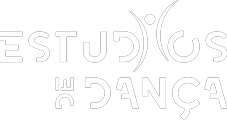Instalação / Installation
Sem Título I (da série “Sitiado”)
Numa obra intitulada Barbed Wire: A Political History, o filósofo francês Olivier Razac afirma:
The worldwide success of barbed wire cannot be denied. It is still associated with a brutal, authoritarian delimitations of space. It has, however, disappeared from our daily landscape, that is, from the urban zones of liberal democracies. Even refugee holding camps limit its use, and will no doubt soon abandon it completely.
Ainda que, de facto, as tecnologias de vigilância venham multiplicando a cada dia, com câmeras e sensores, os muros e as fronteiras invisíveis que definem os espaços que podem e que não podem ser ocupados ou atravessados, a configuração frequente dos espaços urbanos em Fortaleza (e, generalizadamente, no Brasil) materializa um estado de medo e violência. Em nossa cidade, não é incomum que os muros sejam compostos com (ou mesmo de) arame farpado. As novas tecnologias de vigilância e delimitação dos espaços não o substituem; somam-se a ele. É facto que há sempre múltiplas cidades dentro de cada cidade; há múltiplas cidades de Fortaleza em Fortaleza, mas uma delas é a cidade composta como uma arquitetura de medo: os arames farpados, as redes laminadas, as concertinas e as cercas elétricas – para além de demarcarem terrenos e territórios – evocam uma violência iminente, uma paisagem de ameaça tornada cotidiana. O arame farpado, sobretudo, evoca mesmo o imaginário das zonas de conflito. Ele pode ser visto, mais ou menos frequentemente, em todas as regiões da cidade. O espaço extramuros se deprecia como espaço propriamente público, pois é tomado como hostil, intensificando processos de privatização das vidas reconhecíveis em muitas cidades contemporâneas. Cada vez mais as ruas são esvaziadas pela lógica utilitária dos trânsitos; elas são passadas sem serem passeadas. Nelas, caminhar, deambular, flanar, vaguear, vagabundear se afirmam como ações subversivas. A produção das subjetividades é inseparável da produção dos espaços. Ocupar as ruas das cidades, especialmente como Fortaleza, implica perturbar aquilo que nosso urbanismo e nossa arquitetura (im)põem como distribuição e circulação dos corpos; implica inventar e aventurar poética e politicamente outras coreografias urbanas: outros caminhares, outros percursos, outras intervenções, outras velocidades, outras atitudes, outras atenções, outras detenções, outros modos de estar; enfim, outras socialidades.
--------------
[EN]
Untitled I (from the series "Sitiado")
In a work entitled Barbed Wire: A Political History, French philosopher Olivier Razac states:
The worldwide success of barbed wire cannot be denied. It is still associated with a brutal, authoritarian delimitations of space. It has, however, disappeared from our daily landscape, that is, from the urban zones of liberal democracies. Even refugee holding camps limit its use, and will no doubt soon abandon it completely.
Although, in fact, surveillance technologies are multiplying every day, with cameras and sensors, the invisible walls and borders that define the spaces that can or cannot be occupied or crossed, the frequent configuration of urban spaces in Fortaleza (and, in general, in Brazil) materialises a state of fear and violence. In our city, it is not uncommon for walls to be composed with (or even made of) barbed wire. The new technologies of surveillance and delimitation of spaces do not replace it; they are added to it. It is a fact that there are always multiple cities within each city; there are multiple cities of Fortaleza within Fortaleza, but one of them is the city composed as an architecture of fear: the barbed wires, the laminated nets, the concertinas and the electric fences – besides demarcating land and territories – evoke an imminent violence, a landscape of threat made every day. Barbed wire, above all, evokes the imagery of conflict zones. It can be seen, more or less frequently, in all areas of the city. The space outside the walls is depreciated as a proper public space, because it is taken as hostile, intensifying processes of privatisation of lives which are recognisable in many contemporary cities. Increasingly, the streets are emptied by the utilitarian logic of transit; they are passed through without being wandered. In them, walking, wandering, flanking, wandering, tramping are affirmed as subversive actions. The production of subjectivities is inseparable from the production of spaces. Occupying the streets of cities, especially like Fortaleza, implies disturbing what our urbanism and our architecture (im)poses as distribution and circulation of bodies; it implies inventing and venturing poetically and politically other urban choreographies: other walks, other routes, other interventions, other speeds, other attitudes, other attentions, other detentions, other ways of being; in short, other socialities.
Paulo Caldas (Universidade Federal do Ceará)
Coreógrafo, graduado em Filosofia, doutor em Educação e professor dos cursos de Dança da Universidade Federal do Ceará. Sua produção envolve espetáculos, instalações e videodanças. Co-organizou livros sobre videodança e dramaturgia da dança e é diretor do dança em foco – Festival Internacional de Vídeo & Dança.
The choreographer Paulo Caldas has a degree in Philosophy, a doctorate in Education and is a professor for Dance at the Universidade Federal do Ceará. His productions include performances, installations and video dance. He has co-organized books on video dance and dance dramaturgy and is the director of dança em foco – Festival Internacional de Vídeo & Dança.
Allan Diniz
Artista audiovisual, fotógrafo e jornalista; Mestre em Comunicação – Fotografia e Audiovisual (UFC-Brasil), especialista em Linguagens e Mídias Digitais (Uni7-Brasil) com graduação em Comunicação (Unifor-Brasil). Atua internacionalmente como profissional freelancer, conectando as áreas da comunicação, artes e tecnologia por meio de trabalho e pesquisa em audiovisual e fotografia.
Allan Diniz is an audiovisual artist, photographer and journalist with a master’s degree in Communication – Photography and Audiovisual (UFC-Brazil), a specialist in Digital Languages and Media (Uni7-Brazil) and a graduate in Communication (Unifor-Brazil). Works internationally as a freelance professional connecting the areas of communication, arts and technology through work and research in audio-visual and photography.
